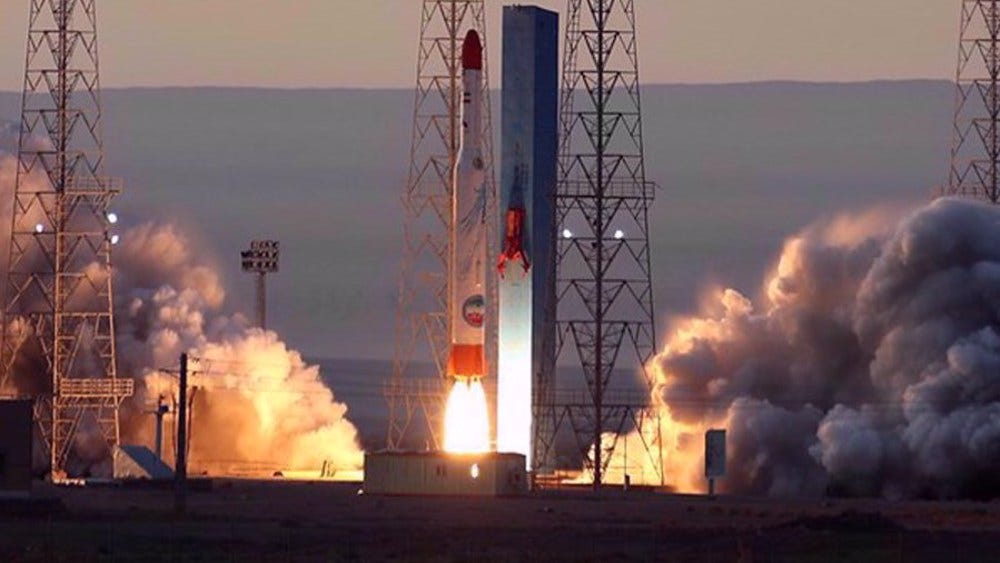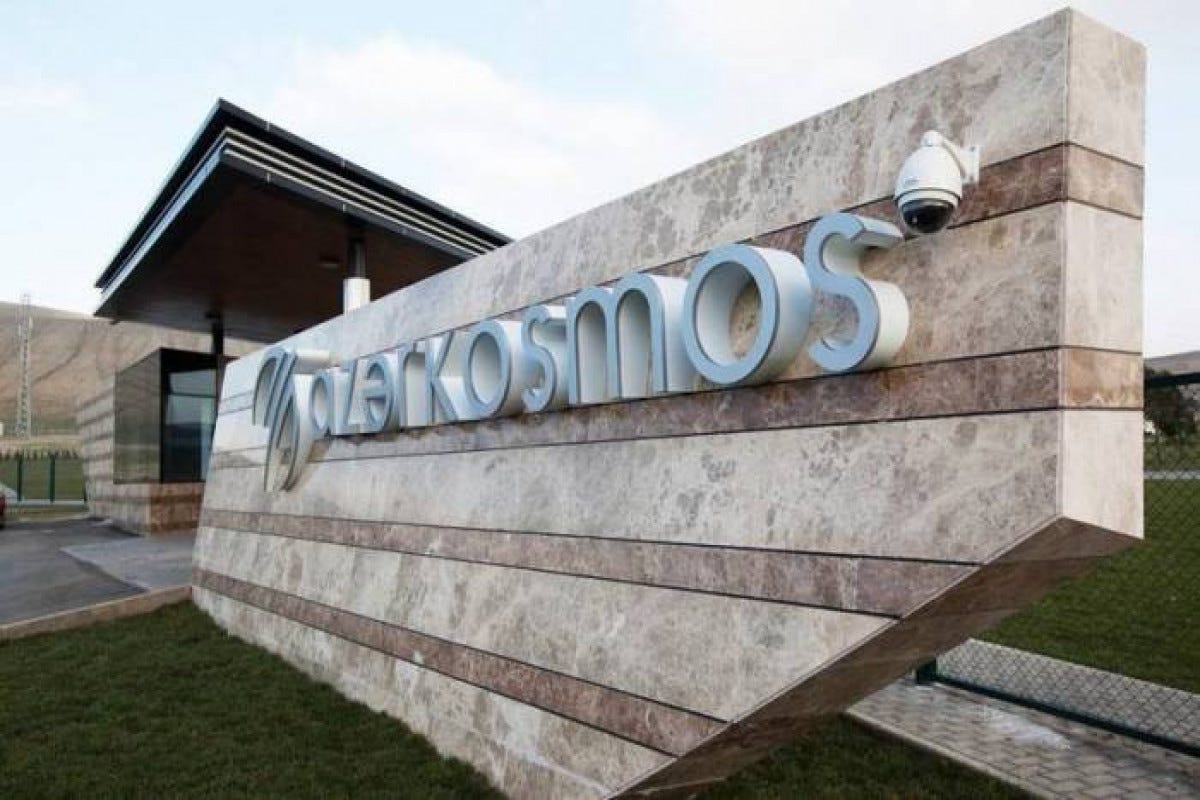Middle East Space Roundup: 31 March to 6 April 2025
A summary of all the space news in the Greater Middle East over the past week, brought to you by AzurX

The following are the major space developments in the Greater Middle East region tracked by Middle East Space Monitor over the past week:
Neo Space Group at AIX 2025, 8-10 April
As the satellite-enabled In-Flight Connectivity (IFC) sector continues to evolve, few organizations are as poised to shape its future as Neo Space Group (NSG). At Aero Interiors Expo (AIX) 2025 in Hamburg, Germany, from 8 to 10 April 2025, Saudi Arabia’s national space champion NSG will showcase its bold vision for the next generation of IFC satellite communications. AIX is the professional platform where airlines, designers, engineers, specifiers, and manufacturers come together to share, collaborate, and find practical and innovative solutions. Please visit Neo Space Group at AIX 2025 at stand 4C32.
Türkiye Space News
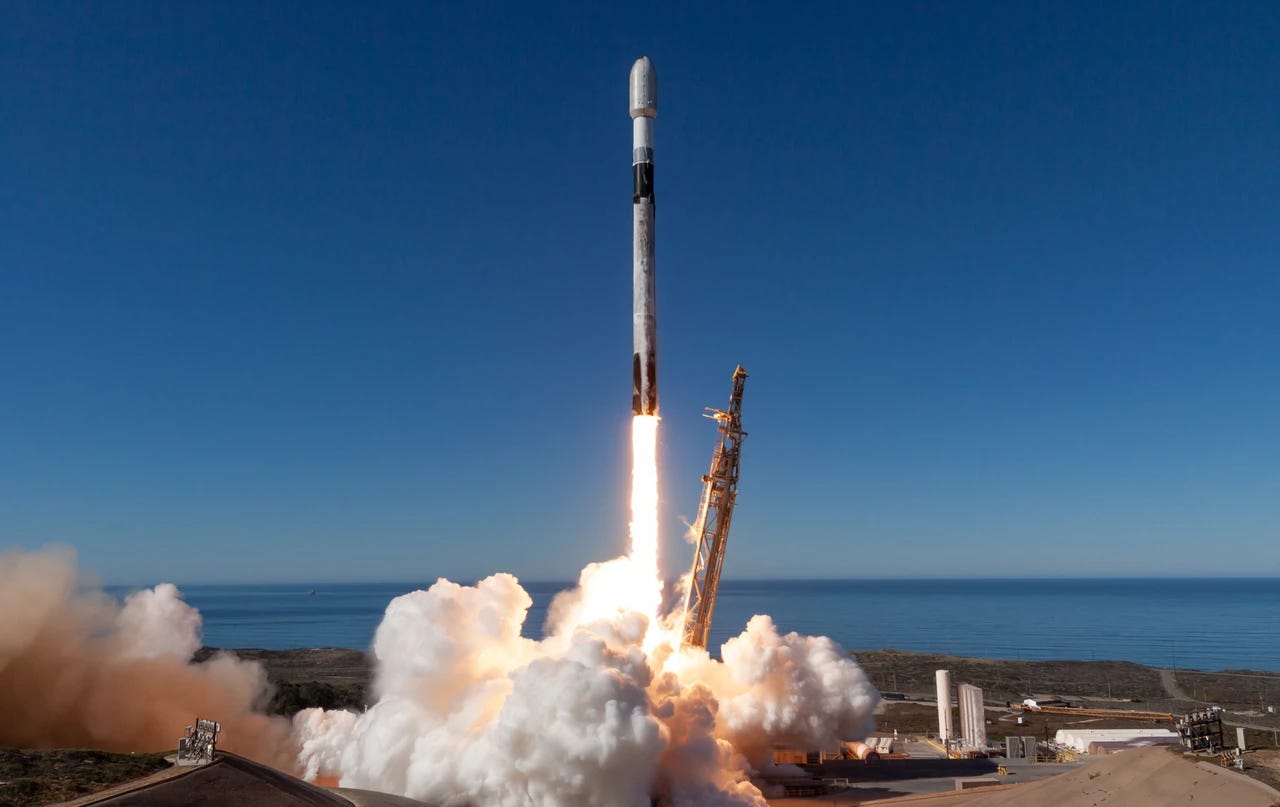
Türkiye to Name Somalian Space Launch Site ‘Spaceport Türkiye’
Türkiye is advancing its strategic ambitions in space through the development of Spaceport Türkiye, a flagship component of its 2022–2030 National Space Program aimed at securing independent access to space and fostering a domestic space industry. The government is actively evaluating launch site locations, with a particular focus on equatorial countries like Somalia, to optimize launch efficiency for low-Earth orbit (LEO) and geostationary orbit (GEO) missions. Initially, the spaceport will support launches of indigenously developed satellites using locally engineered launch vehicles, before expanding into commercial services for international clients, positioning Türkiye as a regional hub for satellite launches and testing. The spaceport will be instrumental in boosting R&D, localizing key subsystems, and enabling technological self-reliance. Long-term goals include a Moon contact mission (AYAP-1) by 2026, the development of a lunar rover (AYAP-2), and the creation of a regional positioning and timing system, alongside investments in space weather monitoring, astronomical observation, and a dedicated space technology zone. These efforts collectively signal Türkiye’s intent to emerge as a competitive player in the global space economy.

Türkiye Pushes Plan to Create a National Satellite Company to Conslidate Space Efforts
Türkiye is advancing a comprehensive plan to consolidate and commercialize its national satellite capabilities through the creation of a state-owned satellite company, as outlined in the Ministry of Industry and Technology’s “2030 Industry and Technology Strategy.” This unified entity will integrate all public stakeholders in the satellite ecosystem, aiming to streamline infrastructure use, eliminate redundancies, and amplify Türkiye’s global competitiveness in the space sector. Building on the success of domestic Earth observation missions like BILSAT, RASAT, GOKTURK, IMECE, and the communications satellite TURKSAT-6A, the initiative will also support the creation of a national satellite brand. A dedicated space technopark in Ankara, under the Türkiye Space Agency (TUA), will drive R&D, talent development, and public-private collaboration in space technologies. Strategically, the effort will bolster defense applications, including intelligence and border security, through the deployment of high-resolution, domestically produced satellites. Key funding programs such as the HIT-30 and the Pre-Competition Cooperation Support Program will prioritize investments in LEO satellites under 200 kg, next-gen communications, and secure infrastructure. In parallel, the agency will launch a laser HB11 fusion energy lab to explore future space energy solutions, positioning Türkiye at the intersection of strategic autonomy, innovation, and space commercialization.
Türkiye Seeks Larger Share of $596 Billion Global Space Economy
Türkiye is intensifying its pursuit of a larger share in the $596 billion global space economy through the strategic implementation of its National Space Program, focusing on the development of critical technologies such as positioning systems, satellite engines, robotics, optical communications, artificial intelligence, and software-defined radios. Recognizing the projected 9% annual growth of the space economy—set to surpass $1 trillion by 2033—Ankara is positioning itself as a regional bridge between Asia and Europe and aims to transition from a consumer to a producer of space technologies. With satellite communications and Earth observation driving global growth, Türkiye is prioritizing domestic capabilities, including the development of a national spaceport, advanced propulsion systems, and additive manufacturing for lightweight spacecraft components. By strengthening private sector involvement, reducing reliance on foreign technology, and investing in deep space exploration, Türkiye seeks to integrate more fully into the global space ecosystem and secure long-term economic and technological benefits.
Türkiye-Argentina GSATCOM Project Highlights Turkish Space Ambitions in Latin America
Türkiye’s growing strategic engagement with Latin America has extended into the space and satellite sector, notably through its GSATCOM partnership with Argentina—a joint geostationary communication satellite development project between Turkish Aerospace Industries (TAI) and Argentina’s INVAP—positioning both nations as emerging players in next-generation satellite technologies. This collaboration reflects Türkiye’s broader push to deepen its high-tech and space-focused partnerships in the region, as part of its evolving foreign policy that goes beyond traditional diplomacy to include trade, infrastructure, and defense. The GSATCOM initiative signifies a shift toward deeper technological integration and signals Türkiye’s commitment to establishing itself as a serious global actor in the space industry, particularly through South-South cooperation. As Turkish embassies in Latin America triple and commercial links surge, such space-focused ventures highlight the alignment of industrial and strategic ambitions, with satellite technology now serving as a key vector in Türkiye’s efforts to co-innovate with Latin American nations and extend its influence in the global space economy.

Türkiye’s METU Launches DeepTrace Project to Understand Extraterrestrial Life Through Deep-Sea Hydrothermal Vents
Turkish scientists from the Middle Eastern Technical University (METU) Institute of Marine Sciences have launched the €2.4 million EU-funded "DeepTrace" project to study deep-sea hydrothermal vents as analogs for extraterrestrial life, in a bold convergence of oceanography and astrobiology. Supported by Türkiye’s Horizon Europe Program and led by Dr. Mustafa Yücel, the project aims to investigate habitats at depths of up to 2,600 meters in the Black Sea, Atlantic, and Pacific oceans, including dives aboard the Atlantis vessel using the famed Alvin submersible. Drawing parallels between Earth’s hydrothermal systems and those suspected beneath the icy moons of Jupiter and Saturn—such as Europa and Enceladus—the project seeks to provide crucial insights into the composition and habitability of subsurface extraterrestrial oceans. The mission’s first expedition, a 36-day collaboration with U.S. institutions, begins this week in the Pacific, with METU hosting a dedicated lab to analyze seabed samples and develop in-house sensors. Set to run through 2028, DeepTrace marks a strategic expansion of Türkiye’s scientific footprint in the growing field of space-enabled Earth and planetary sciences.
Türkiye-Pakistan’s Growing Strategic Partnership Expanding to Space, Satellite Reconnaissance
Amid shifting geopolitical dynamics and a rapidly expanding global space economy, the Türkiye-Pakistan partnership is emerging as a strategic force with deepening collaboration in defense and satellite technologies. While much attention has focused on naval and aerial defense cooperation, including co-produced corvettes and advanced drone acquisitions, there is growing interest in leveraging Türkiye’s satellite reconnaissance capabilities—developed through its Göktürk programs—to enhance Pakistan’s surveillance and border security operations. Both countries are exploring joint ventures in military space platforms, such as satellite-based early warning systems and airborne surveillance technologies. Looking ahead, collaboration in satellite development and possibly co-investment in space launch capabilities could become pivotal pillars of their defense partnership, especially as Türkiye advances projects like the KAAN stealth fighter and looks to localize key space components. This evolving technological alliance positions both countries to jointly navigate sensitive areas like missile technology and satellite surveillance while shaping a broader regional strategic order that integrates aerospace cooperation with economic and diplomatic ambitions.
Israel Space Developments
Israel’s SatixFy to be Acquired by Canada’s MDA Space in $269 Million Deal
Canada's MDA Space has announced a $269 million acquisition of Israel’s satellite chipmaker SatixFy, a strategic move to vertically integrate its satellite manufacturing operations and bolster its capacity to produce up to two software-defined satellites per day. SatixFy, already a key MDA supplier following its 2023 sale of U.K.-based payload assets to the Canadian firm, brings with it significant R&D investment—approximately $270 million—and a robust intellectual property portfolio of over 60 patents. The acquisition will enhance MDA's ability to develop next-generation, reprogrammable satellite payloads and strengthen its offerings across digital antennas, gateways, and user terminals. The deal, which includes the payoff of SatixFy’s $76 million debt, reflects a 75% premium over SatixFy’s last trading price and comes amid a turnaround effort for the chipmaker following a volatile post-SPAC public listing. The transaction, expected to close in Q3 2025 pending regulatory approvals, supports MDA’s broader ambitions to become a leading NGSO constellation prime contractor, following major wins including Telesat’s 200-satellite order and a 50+ satellite contract for Globalstar’s Apple-backed network.
Researchers at Israel’s Ariel University Make Breakthrough in Electromagnetic Launch Technology for Space Exploration
Researchers at Israel’s Ariel University have made a significant breakthrough in electromagnetic launch technology that could reshape future lunar space missions. In a study published in Scientific Reports, Professor Moshe Einat and Dr. Yafit Orbach demonstrated a coilgun-based electric launch system capable of accelerating projectiles to record speeds using solar-powered electricity—a key innovation for fuel-free space operations on the Moon. By overcoming traditional coilgun limitations through a multi-stage acceleration method and energy-recycling circuitry, the team achieved a velocity of 131 meters per second, the fastest recorded for this class of launcher. The research points toward a future where lunar payloads, including research instruments and materials, could be launched into Earth orbit or beyond without chemical propellants. This concept not only advances sustainable off-Earth logistics but positions the Moon as a potential electromagnetic launch hub for deep space exploration, reflecting a strategic shift toward infrastructure that leverages in-situ energy and removes dependency on Earth-supplied fuel.

Israel’s SpaceIL Announces Suspension of Beresheet-2 Lunar Mission Due to Lack of Funding
Israel’s SpaceIL has suspended engineering development of its Beresheet-2 lunar mission due to an unresolved funding shortfall, resulting in staff layoffs and halted supplier contracts. The ambitious project—originally planned to include two landers and an orbiter targeting both the near and far sides of the Moon—was unveiled following the partial success of Beresheet-1 in 2019, which made Israel the seventh country to reach lunar orbit. Despite international recognition and prior backing by key donors, including Patrick Drahi and Morris Kahn, the withdrawal of support in 2023 and subsequent difficulties exacerbated by regional conflict led to unsuccessful fundraising efforts by March 2025. While educational programs like SpaceUP and Horizon will continue, the mission’s technical activities remain in limbo. A recent letter of intent between the Israeli and Italian space agencies hinted at possible collaboration, including replacing one lander with Italian satellites, but no binding agreement has materialized. SpaceIL, supported by the Israel Space Agency, maintains its commitment to eventually reviving the mission, preserving its engineering know-how to ensure a rapid restart if future funding is secured—underscoring the project's importance to Israel’s space sector and STEM education agenda.
U.S. Report: Israel’s Counterspace Capabilities Place It in Regional Lead
U.S. think tank Secure World Foundation has released the 2025 edition of its Global Counterspace Capabilities Report which includes a chapter on Israel’s counterspace efforts. Israel has significantly expanded its military space posture in recent years, building on its long-standing civil space achievements and integrating space capabilities into its defense strategy. While Israel has not explicitly tested or declared a direct-ascent anti-satellite (DA-ASAT) program, its Arrow-3 missile defense system—developed jointly with the U.S.—demonstrated an exoatmospheric intercept in 2023, suggesting a latent counterspace capability. The country has also employed robust electronic warfare (EW) measures during active conflict, including GPS jamming and spoofing, particularly since the outbreak of hostilities in October 2023. These operations have affected aviation and satellite-based navigation across Israel, Lebanon, Jordan, and beyond. Additionally, Israel is advancing directed-energy weapon development with the Iron Beam laser, although its utility against spaceborne threats remains unproven. Israel’s space situational awareness relies on the Green Pine radar system, and its SSA cooperation with the U.S. suggests further capabilities in tracking low-Earth orbit assets. The creation of the IDF’s Space Directorate in 2024 and public statements by senior officials confirm that Israel is actively pursuing space warfare capabilities, positioning itself as a regional space power with emerging counterspace tools focused primarily on reversible effects and national security defense.
Israeli Researchers Develop AI Model for Detecting Remote Wildfires by Satellite
Israeli researchers from Bar-Ilan, Ariel, and Tel Aviv Universities have developed an advanced AI model capable of predicting lightning-induced wildfires with over 90% accuracy, marking a significant breakthrough in environmental monitoring using satellite data. By analyzing seven years of global high-resolution satellite imagery and environmental variables such as vegetation, terrain, and weather patterns, the system focuses specifically on lightning-triggered fires—an increasingly dangerous threat driven by climate change. Unlike traditional wildfire indices that prioritize human-caused ignition sources, this AI model addresses fires in remote areas that often evade early detection and can grow uncontrollably. Though not yet deployed for real-time forecasting, the research underscores the growing role of machine learning in climate resilience, space-based Earth observation, and risk mitigation planning. As lightning activity intensifies globally, the integration of such satellite-enabled predictive tools into disaster management systems could prove vital for saving lives and ecosystems.
Saudi Arabia Space Developments

Saudi Arabia’s Riyadh Air Selects Viasat for SATCOM Inflight Connectivity Services
Viasat has secured a strategic partnership with Saudi Arabia’s newly launched premium carrier, Riyadh Air, to provide complimentary in-flight connectivity across its Boeing 787 Dreamliner fleet, marking a significant commercial win in the competitive satellite communications market. Utilizing Viasat’s Ka-band technology and multi-orbit ready satellite network, the service will support high-bandwidth applications—including streaming, gaming, and web browsing—from gate to gate, and will be free for loyalty program members. The integration of this satellite-based solution into Riyadh Air’s seatback systems and digital platforms reflects the airline’s ambition to offer a hyper-personalized, digitally native travel experience. This deployment aligns with Viasat’s broader push to expand its footprint in the high-growth Middle Eastern aviation market and signals the operational readiness of its latest satellite infrastructure. As Riyadh Air scales its fleet, the multi-year implementation presents a substantial long-term revenue opportunity for Viasat, while reinforcing its position against aviation connectivity rivals like Intelsat and Panasonic Avionics.
Saudi Arabia’s GEOSA Sponsor’s Geospatial Week 2025 in Dubai
Saudi Arabia’s General Authority for Survey and Geospatial Information (GEOSA) will serve as a main sponsor of Geospatial Week 2025 (GSW 2025), reflecting its strategic commitment to advancing global geospatial collaboration and innovation. Held in Dubai, UAE, from 7 to 11 April 2025 and co-organized by the International Society for Photogrammetry and Remote Sensing (ISPRS) and the Mohammed bin Rashid Space Centre (MBRSC), the event will spotlight remote sensing, aerial imaging, and AI-driven Earth observation technologies. GEOSA’s involvement is multifaceted, including a keynote panel on its role as a national engine for geospatial innovation and governance, chairing Arab scientific sessions, and showcasing Saudi Arabia’s national geospatial infrastructure in a dedicated pavilion. The participation of GEOSA’s president, Dr. Eng. Mohammed bin Yahya Al Sayel, as ISPRS’s regional representative for the Arab States, underscores the Kingdom’s growing influence in the international geospatial community. GEOSA is also facilitating student and academic participation to boost national capacity building and promote AI applications in Earth observation. Through its active presence, GEOSA aims to position Saudi Arabia as a regional leader in geospatial technologies and policy development.
Saudi Arabia Benefits from Australia’s Myriota Satellite IoT Constellation Expansion
Australia’s Myriota has expanded its UltraLite satellite Internet of Things (IoT) constellation with the successful launch of four additional nanosatellites aboard SpaceX’s Transporter-12 mission, significantly enhancing the capacity and geographic coverage of its low-power, low-cost IoT network. This expansion, executed in partnership with Spire Global, strategically targets new markets including the Middle East, where Myriota is increasingly active. Notably, the company recently completed Saudi Arabia’s Communications, Space & Technology Commission (CST) Sandbox program, deploying satellite-enabled water metering solutions in remote areas for the Ministry of Environment, Water, and Agriculture, in collaboration with STC and Giza Systems. Backed by a $32 million funding round led by the National Reconstruction Fund Corporation and key investors, Myriota is accelerating its global footprint with a specific focus on the digitization of field-based industries in the Middle East. This move positions Myriota as a key player in the region’s growing demand for secure, scalable satellite IoT infrastructure—aligning with broader Middle Eastern ambitions in smart utilities and environmental monitoring.

Saudi Rabia’s Falak Space Research Institute Successfully Completes Space Eye Experiment
Saudi Arabia’s nonprofit Falak Space and Research successfully launched the first Arab-led nonprofit space research mission aboard a SpaceX Falcon 9 rocket from NASA’s Kennedy Space Center, marking a milestone in regional space science. The mission, Fram2, entered polar orbit to conduct over 20 experiments focused on space medicine, including pioneering work on astronaut eye health, X-ray photography in space, and mushroom cultivation in microgravity—critical studies for enabling future deep-space missions such as those to Mars. Notably, this mission positions Falak as a unique actor in the Arab space ecosystem, leveraging nonprofit research to drive innovation in long-duration human spaceflight. The internationally crewed capsule will operate in both northern and southern polar orbits, expanding the environmental parameters for scientific experimentation and underlining Saudi Arabia’s growing ambitions in space R&D.
UAE Space News
UAE’s MBRSC Hosts Geospatial Week 2025 in Dubai, 7 to 11 April 2025
Geospatial Week 2025 (GSW 2025), hosted by the UAE’s Mohammed Bin Rashid Space Centre (MBRSC) in partnership with the International Society for Photogrammetry and Remote Sensing (ISPRS), is set to convene global geospatial leaders in Dubai from 7 to 11 April 2025. Under the theme “Photogrammetry and Remote Sensing for a Better Tomorrow,” the event will feature a comprehensive programme of technical workshops, plenaries, and exhibitions highlighting cutting-edge advancements in satellite-based Earth observation, photogrammetry, and geospatial data applications. GSW 2025 aims to foster high-level collaboration across academia, industry, and government, with a focus on sustainable solutions and the integration of remote sensing technologies into global development goals. Positioned as a strategic platform for international cooperation and innovation, the event underscores MBRSC’s growing role in the regional and global geospatial ecosystem and ISPRS’s mission to enhance visibility and engagement in spatial sciences.
Report Claims UAE’s Space42 Seeks Regional Expansion to Kuwait, Saudi Arabia
Ali Al Hashemi, CEO of Yahsat Space Services—now part of the newly formed Space42 following its merger with Bayanat—has emerged as a central architect of the UAE’s strategic push to expand its satellite and geospatial capabilities under the broader vision of President Sheikh Mohammed Bin Zayed Al Nahyan, according to Tactical Report. While framed as civilian initiatives, Al Hashemi’s satellite projects carry clear dual-use potential, offering key defense and intelligence benefits. His agenda focuses on scaling innovation, growing international partnerships without technology transfer preconditions, and establishing the UAE as a hub for advanced satellite communications, Earth observation, and geospatial services. Notably, Al Hashemi is pursuing partnerships with major defense and aerospace firms including Lockheed Martin, Thales, BAE Systems, and Airbus, while seeking to deepen regional cooperation with Saudi Arabia’s Communications, Space and Technology Commission (CST), Kuwait’s Kuwait Space Company (KSC), and the UAE’s EDGE Group. His strategic outreach targets emerging markets in Latin America, Africa, and other Muslim countries, with over 140 countries already benefiting from UAE geospatial services. Backed by senior UAE leadership and connected to global industry powerbrokers, Al Hashemi is positioning Space42 as a pivotal player in the integration of civilian and military satellite systems on a global scale.
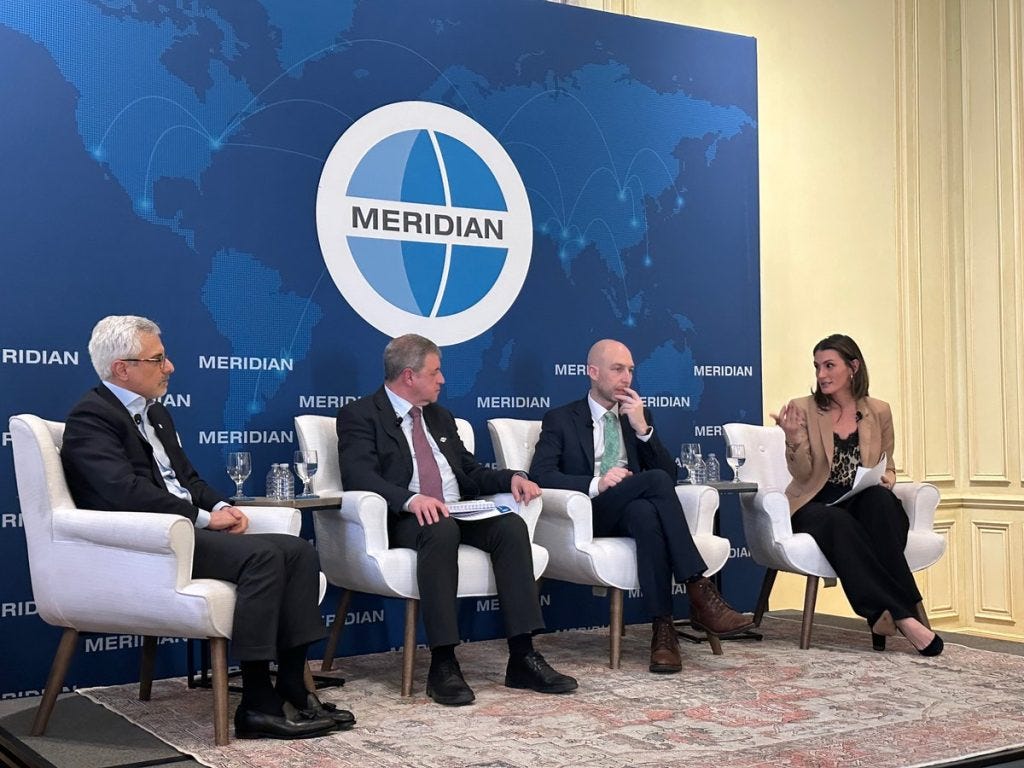
U.S. Office of Space Commerce Emphasizes Commercial Space Partnership With the UAE
At the Satellite 2025 conference in Washington, DC, the U.S. Office of Space Commerce (OSC) underscored its commitment to fostering global commercial space partnerships, with particular emphasis on collaboration with the United Arab Emirates (UAE). On 12 March 2025, OSC’s Gabriel Swiney joined a panel alongside representatives from the Space Foundation, Argentina’s space agency (CONAE), and UAE-based satellite firm Space42 to explore how harmonized commercial space policies can stimulate economic growth, increase global market access, and bolster international security amid intensifying space competition. The presence of Space42 highlighted the UAE's growing role as a strategic player in the global satellite and commercial space ecosystem. The discussions, held at the Meridian International Center, positioned the UAE not only as a commercial satellite operator but also as an active participant in shaping multilateral space governance frameworks. These engagements reflect the UAE’s broader ambition to integrate with leading spacefaring nations and support the global expansion of its space economy.
Bahrain Space Developments
Bahrain’s Al Munther Satellite Commences Initial Orbital Operations
The Bahrain Space Agency (BSA) has confirmed the successful commencement of initial operations for its national satellite Al Munther, launched on 15 March 2025 aboard a SpaceX Falcon 9 from Vandenberg Space Force Base. Now in a stable orbit, the satellite has transmitted multiple signals back to its ground station, with diagnostics confirming that core systems—including power, communication, and orientation—are functioning within design parameters. The activation phase, overseen by Project Manager Aysha Al Haram, involves rigorous testing of each system, including solar panels, wireless communication, and thermal regulation, before progressing to the satellite’s four payloads, notably an artificial intelligence module. The complexity of orbital operations, constrained communication windows, and environmental unpredictability mean this phase lacks a fixed timeline, requiring careful command planning and repeated testing to ensure mission integrity. According to BSA Chief Executive Dr. Mohammed Al Aseeri, Al Munther represents a significant milestone in Bahrain’s space ambitions, setting a foundation for advanced national capabilities in satellite operations, Earth observation, and scientific payload development.
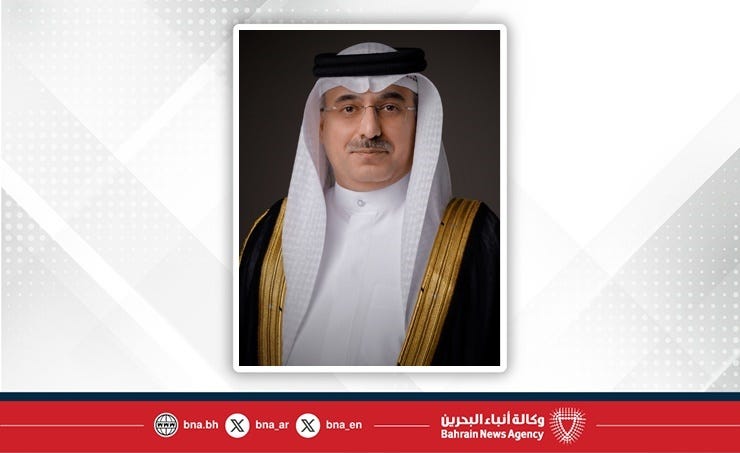
CEO of Bahrain Space Agency Participates in UAE Remote Sensing Workshop
Dr. Mohammed Al Aseeri, Chief Executive of the Bahrain Space Agency (BSA), underscored the strategic role of satellite technologies in environmental monitoring and climate research during a regional workshop co-hosted by the Emirati Society for GIS and Remote Sensing and the Mohammed bin Rashid Space Centre (MBRSC) in the UAE. Emphasizing the synergy between satellites and drone systems, Al Aseeri highlighted how the integration of these platforms enables precise, real-time data collection on atmospheric pollutants and climate indicators—crucial for policy-making and sustainable development. He advocated for deeper collaboration between the BSA, research institutions, and environmental agencies to develop joint projects grounded in satellite-derived data. The workshop, which showcased successful UAE case studies, concluded with a call for increased investment in space-based and remote sensing infrastructure to support advanced predictive models and build robust, integrated environmental monitoring systems across the region.
Iran Space News
U.S. Report: Iran’s Counterspace Capabilities Remains Limited in “Scope and Military Utility”
U.S. think tank Secure World Foundation has released the 2025 edition of its Global Counterspace Capabilities Report which includes a chapter on Iran’s counterspace efforts. Despite recent advancements in satellite development and launch capabilities, Iran’s counterspace program remains limited in both scope and military utility. While the Islamic Republic has demonstrated an ability to build and orbit small satellites using both civil and military space launch vehicles—such as the Simorgh, Qassed, and Qaem-100—it lacks the technical capacity for co-orbital or direct-ascent anti-satellite (ASAT) systems. There is no public evidence of homing kinetic kill vehicle development or active DA-ASAT programs, though Iran’s maturing ballistic missile infrastructure theoretically provides a foundation for such systems. Iran’s most credible counterspace activity lies in electronic warfare, particularly its persistent jamming of commercial satellite broadcasts and increasing use of GPS spoofing, including reported disruptions to commercial aviation. While Iran has established an IRGC space command and continues to invest in launch infrastructure, such as the Chabahar spaceport, and its military has developed solid-fueled SLVs capable of lofting reconnaissance payloads, its space situational awareness capabilities remain rudimentary. Ultimately, Iran’s counterspace posture is evolving but remains constrained by limited technical maturity, international sanctions, and lack of sophisticated command-and-control or on-orbit maneuvering capabilities.
Iran Plans Inauguration of Second Phase of the Chabahar Spaceport
Iran is advancing its space infrastructure with the planned inauguration of the second phase of the Chabahar spaceport, designed for semi-heavy liquid-fueled satellite launch vehicles (SLV). According to Iranian Space Agency head Hassan Salarieh, this phase will be launched during the current Persian calendar year, following the expected commissioning of the first phase for solid-fueled launchers. The Chabahar spaceport is strategically located near oceanic waters and closer to the equator, positioning it as a potential regional hub for geostationary and inclined orbit launches. Salarieh emphasized the port’s role in enabling Iran’s entry into the international satellite launch market, highlighting Iran’s self-reliance in launch technology and suggesting reciprocal commercial launch services with other countries. This expansion follows recent successful domestic satellite missions, including the launch of the Noor-3 imaging satellite via the Qased SLV and the Mahda technology validation satellite aboard the Simorgh launcher. Iran’s positioning among the top ten countries with indigenous satellite launch capability underscores its intent to leverage space infrastructure for both strategic autonomy and economic opportunity.
U.S. Makes Unverified Claim that Iran is Developing Plasma Weapons
Amid escalating Middle East tensions, the U.S. Department of Defense has stirred global defense circles with unverified claims that Iran is developing plasma weapon technology—a field often associated with science fiction rather than operational military systems. Pentagon spokesperson Sean Parnell alleged that NASA satellites detected early indications of such systems in 2022, though neither visual evidence nor technical documentation has been provided. If confirmed, Iran’s advancement into directed-energy plasma weaponry would mark a dramatic shift in strategic capabilities, challenging the dominance of high-tech military powers like the U.S., China, and Russia. Plasma weapons, while theoretically capable of damaging satellite systems and electronic infrastructure through extreme heat and electromagnetic disruption, remain largely experimental due to challenges like energy demands, targeting precision, and atmospheric stability. Despite Iran’s known research capabilities in plasma science through institutions such as the Iranian Space Research Center, no direct evidence has surfaced linking these efforts to weaponization. Some analysts suggest the U.S. claim may reflect strategic posturing aimed at applying pressure on Tehran amid ongoing regional rivalries. With little to substantiate the assertion, and Iran remaining silent, the episode raises critical questions about the role of space-based surveillance, psychological operations, and geopolitical signaling in modern defense narratives.
Other Regional Space Developments
Azerbaijan’s Azercosmos Generates $2.7 Million in SATCOM Revenue for 1Q 2025
Azercosmos, the national space corporation of Azerbaijan, generated $2.7 million in revenue from exporting satellite telecommunication services to nearly 90 companies across 37 countries during January–February 2025, according to the Center for Analysis and Communication of Economic Reforms. While this figure marks a 10% year-on-year decline, export activity still accounted for 66% of Azercosmos’ total revenue in the period, underscoring the agency’s strong dependence on international markets. Key importers included the UK, Luxembourg, Nigeria, Egypt, Türkiye, and Pakistan, reflecting the agency's diverse global footprint and strategic partnerships. The performance illustrates both the regional competitiveness of Azerbaijan’s satellite communication services and the importance of maintaining service innovation amid fluctuating global demand.
Opinion: The Gulf’s Rising Space Role in a New Global Order
Writing in Defense Arabia, AzurX Senior Partner Mark Allworthy argues that as global power dynamics shift toward transactional alliances and heightened competition for advanced technologies, space, and satellite infrastructure are increasingly central to national security and geopolitical influence. In this evolving landscape, the Gulf States—especially Saudi Arabia and the broader GCC—have emerged as critical players, adeptly navigating multilateral relationships with the U.S., Europe, China, and Russia while strategically investing in defense and space capabilities. With virtually all future defense systems dependent on integrated space architecture, access to satellite networks and space-based data has become indispensable. Gulf countries, recognizing this, are positioning themselves not only as buyers of space technology but as partners in its development, with ambitions to become regional hubs for satellite-enabled defense, communications, and intelligence services. As smaller economies face mounting costs and technical hurdles in developing sovereign space capabilities, collaborative programs like the Global Combat Air Programme offer a glimpse into the future—where shared access to space infrastructure becomes a condition for participation in next-generation defense ecosystems. The Gulf's centralized long-term planning, financial leverage, and diplomatic agility uniquely equip it to influence the future trajectory of space collaboration, potentially transforming it into a geopolitical hub for emerging space and satellite alliances.
Be sure to catch up with space activities in the region in the next edition of Middle East Space Monitor’s space roundup!






